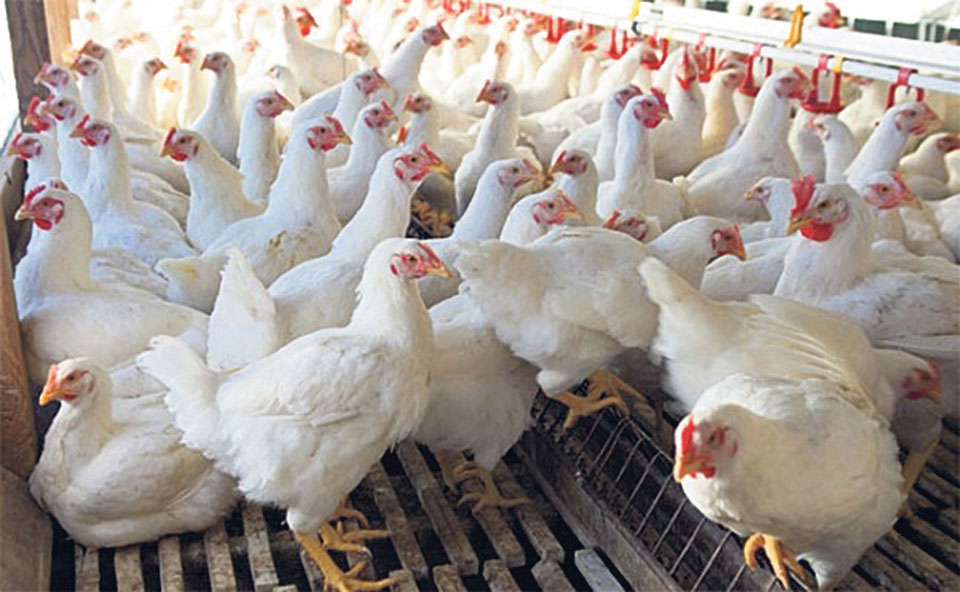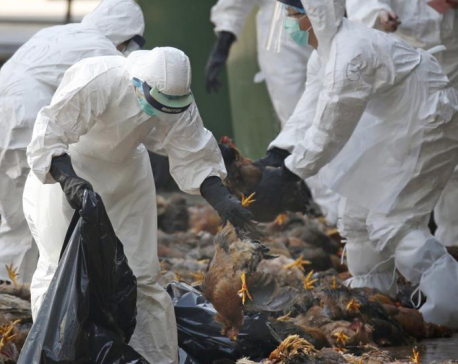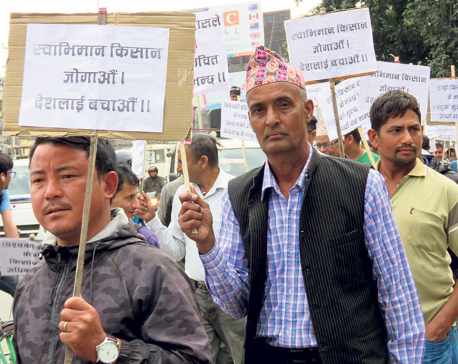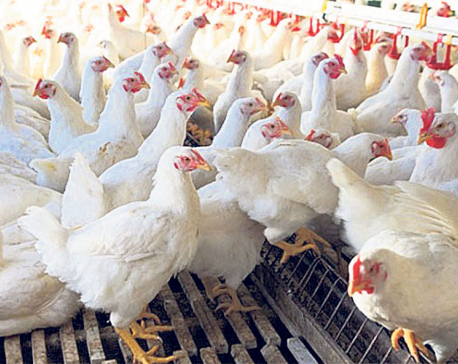
OR

So far our campaign against bird flu is mostly focused on and designed for poultry
farmers. It should be further extended to live bird market visitors and workers
Tens of thousands of chickens have been culled due to bird flu that spread in dozens of poultry farms across the country in recent days. It is now confirmed that the “H5N1” virus is responsible for ongoing outbreaks. A couple of months ago, hundreds of chickens died of bird flu known as “H9N2” virus in a short period of time in a capital based poultry farm. Unfortunately, during the outbreak, poultry farmers (family members) simultaneously developed flu like symptoms such as high-grade fever, cough, sore throat, chest pain and weakness, and visited hospital after their conditions progressively worsened. But the test showed negative.
Symptoms and diagnosis
Bird flu outbreaks in multiple sites have, indeed, raised some critical questions: Are we missing bird flu cases in Nepal? If not, how can we be sure that no cases of bird flu exist in Nepal without testing a virus in humans with flu like illness, especially for poultry farmers or those who have had a history of direct contact with suspected birds?
In 1997, bird flu H5N1 virus drew the world’s attention due to its threat to human health and potential pandemicity. For the first time in Hong Kong, it was documented that this virus can be transmitted from birds to humans. H5N1 is considered as a highly pathogenic avian influenza (HPAI), meaning it can cause severe disease in chickens leading up to 100 percent mortality. In humans, the mortality rate is about 60 percent. Low pathogenic avian influenza (LPAI) causes mild disease and little or no mortality in chickens and birds. H9N2, another bird flu virus seen in Kathmandu, is categorized as a LPAI virus. However, since this virus was found responsible for deaths of hundreds of chickens in Kathmandu, it may have already evolved into HPAI, though more studies is required to reach the conclusion. So far, no human deaths due to H9N2 virus have been reported.
Numerous studies show that patients with bird flu H5N1 virus show the symptoms of high-grade fever, cough, shortness of breath, abnormalities on chest radiographs, especially pneumonia. Non-respiratory symptoms such as diarrhea, vomiting, and abdominal pain are also reported in humans. It often progresses rapidly to lower respiratory tract, necessitating mechanical ventilation due to acute respiratory distress syndrome and ultimately leads to multi-organ failure with renal and cardiac dysfunction.
H9N2 virus, however, has so far shown mild symptoms compared to H5N1 virus. Nevertheless, farmers, who visited Sukraraj Tropical and Infectious Disease Hospital (STIDH) followed by H9N2 virus outbreak in their own farm, had developed severe symptoms. According to the World Health Organization (WHO), so far, at least three laboratory-confirmed cases of H9N2 have been reported from China but they are mild in nature, and no case clusters have been reported. On the contrary, two patients presented with flu like illness during bird flu outbreak were from the same family and it is thought to have occurred between them (between a pregnant woman and her mother-in-law).
Confirmation of a virus requires molecular method such as polymerase chain reaction (PCR), which is now available at National Influenza Center in National Public Health Laboratory, Teku. Currently, this center is actively involved in identifying type A influenza virus that includes subtypes known as H1, H3, Pdm09, H5a, H5b, H7N9 and type B influenza virus. Among these subtypes, H5 and H7N9 are of avian origin, meaning bird flu viruses. However, H9N2 virus is not included or available in the screening testing. Nepal has been witnessing regular outbreaks of bird flu over the last several years, which means that we are at risk of having bird flu virus at anytime and anywhere. It is now critical to have a laboratory testing facilities for those who remain in close contact with birds.
Beyond poultry
At present, our campaigns against bird flu are mostly focused on and designed for poultry farmers. However, most of the cases reported in the scientific literatures, are found to be infected in the live bird markets during their visit. Thus customers (visitors) as well as live-birds market workers are at greater risk of exposure and contraction of bird flu virus. Moreover, butchers and transporters remain in regular contact with birds, meaning they are also at higher risk of infection. Therefore, concerned authorities must disseminate information or conduct training at a regular basis about preventive measures for butchers, transporters, bird sellers and people who frequently visit live bird markets, apart from poultry farmers.
According to the WHO guidelines (2007), the likelihood of bird flu infection for ill persons increases if exposure to birds or environments contaminated with bird dropping or consumption of uncooked poultry product occurs. People working with birds/animals present with unexplained acute lower respiratory illness with fever can be suspected as having bird flu. Patients who visited STIDH met the above mentioned criteria and therefore they were considered as bird flu cases, although they were not verified by laboratory testing due to its unavailability.
It needs serious attention and vigilance as well as laboratory analysis to understand the nature of bird flu virus circulating in Nepal.
The author is Chief of Clinical Research Unit, at Sukraraj Tropical and Infectious Disease Hospital, Kathmandu
You May Like This

Bird flu outbreak found in Kathmandu
KATHMANDU, March 17: Bird flu has been detected in two poultry farms at Tarkeshwar Municipality in Kathmandu. ... Read More...

Poultry farmers stare at huge loss as chicken price falls
CHITWAN, Nov 5: Madan Baral of Bharatpur Metropolitan City Ward 2 has nearly 1,200 market ready chickens in his farm. Read More...

Poultry entrepreneurs warn of chicken scarcity after lockdown
KATHMANDU, April 6: Poultry entrepreneurs are worried about scarcity of chicken in the market even after the lockdown is lifted... Read More...




Just In
- MoHP cautions docs working in govt hospitals not to work in private ones
- Over 400,000 tourists visited Mustang by road last year
- 19 hydropower projects to be showcased at investment summit
- Global oil and gold prices surge as Israel retaliates against Iran
- Sajha Yatayat cancels CEO appointment process for lack of candidates
- Govt padlocks Nepal Scouts’ property illegally occupied by NC lawmaker Deepak Khadka
- FWEAN meets with President Paudel to solicit support for women entrepreneurship
- Koshi provincial assembly passes resolution motion calling for special session by majority votes








_20220508065243.jpg)






Leave A Comment